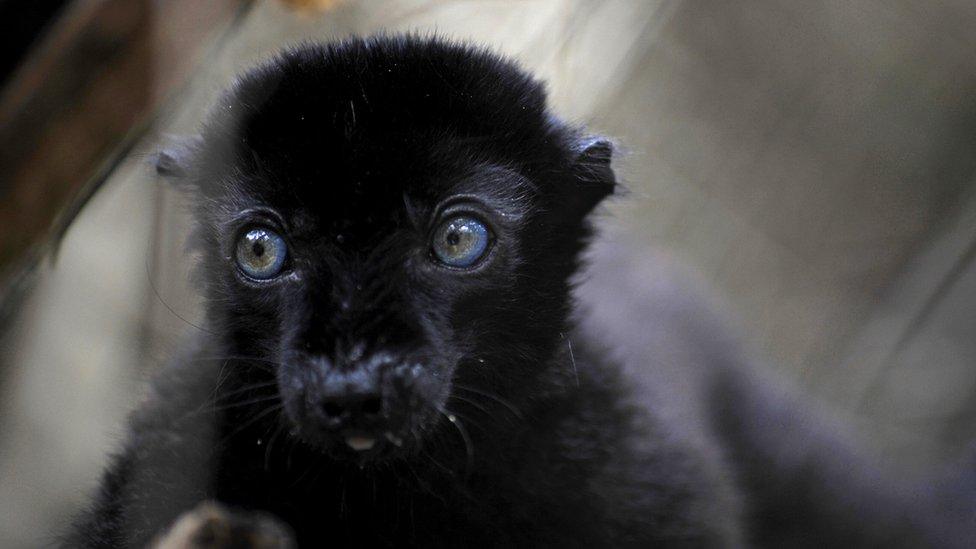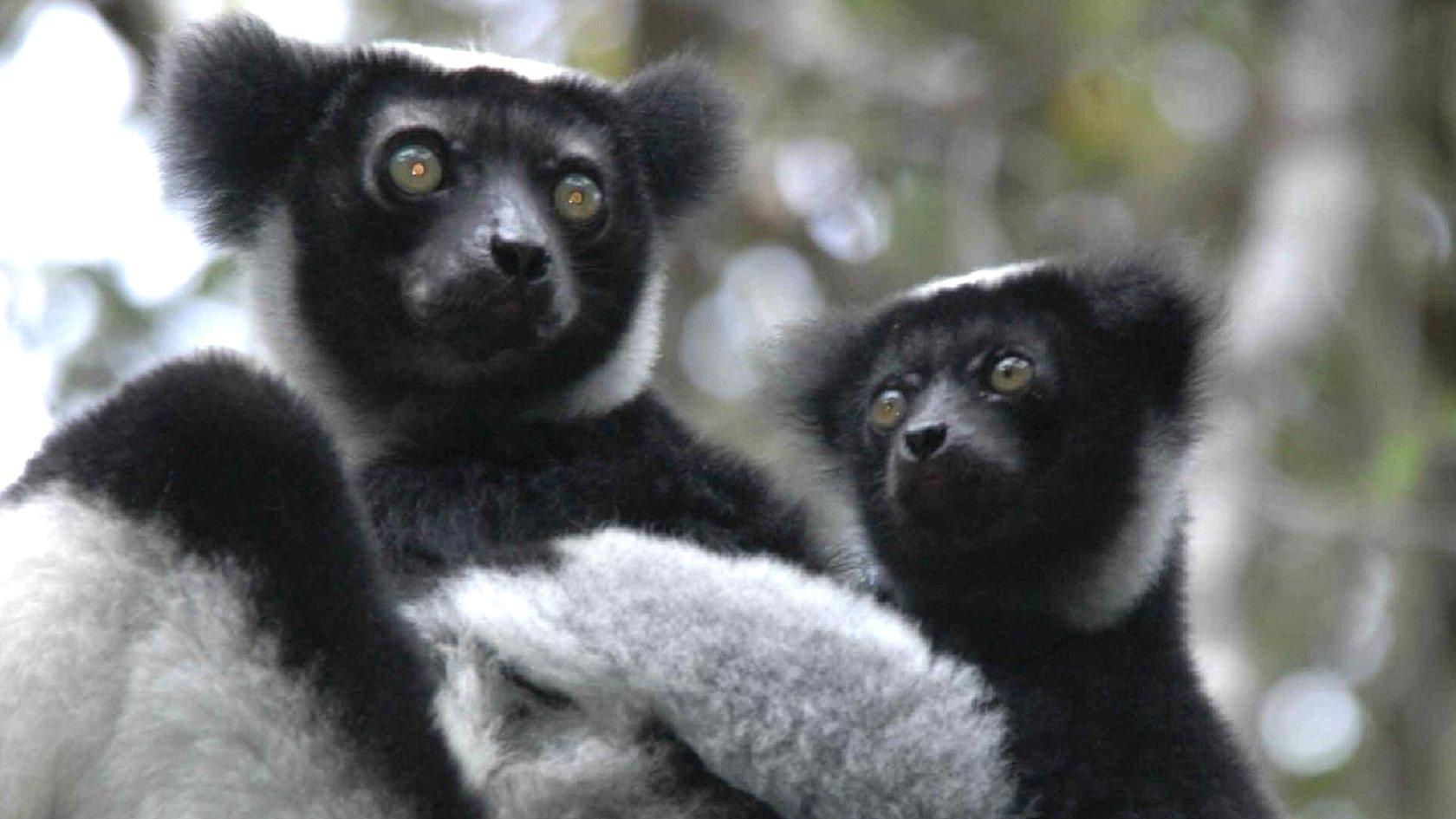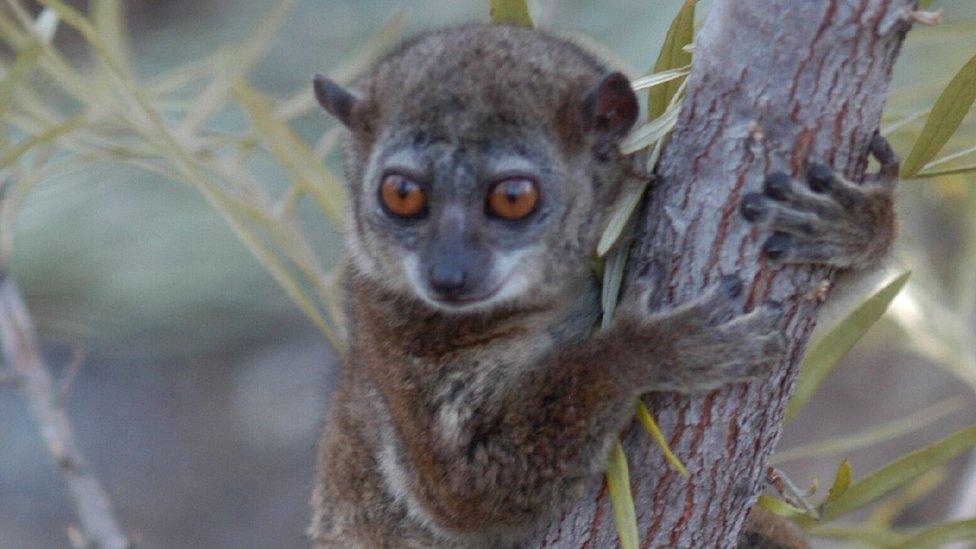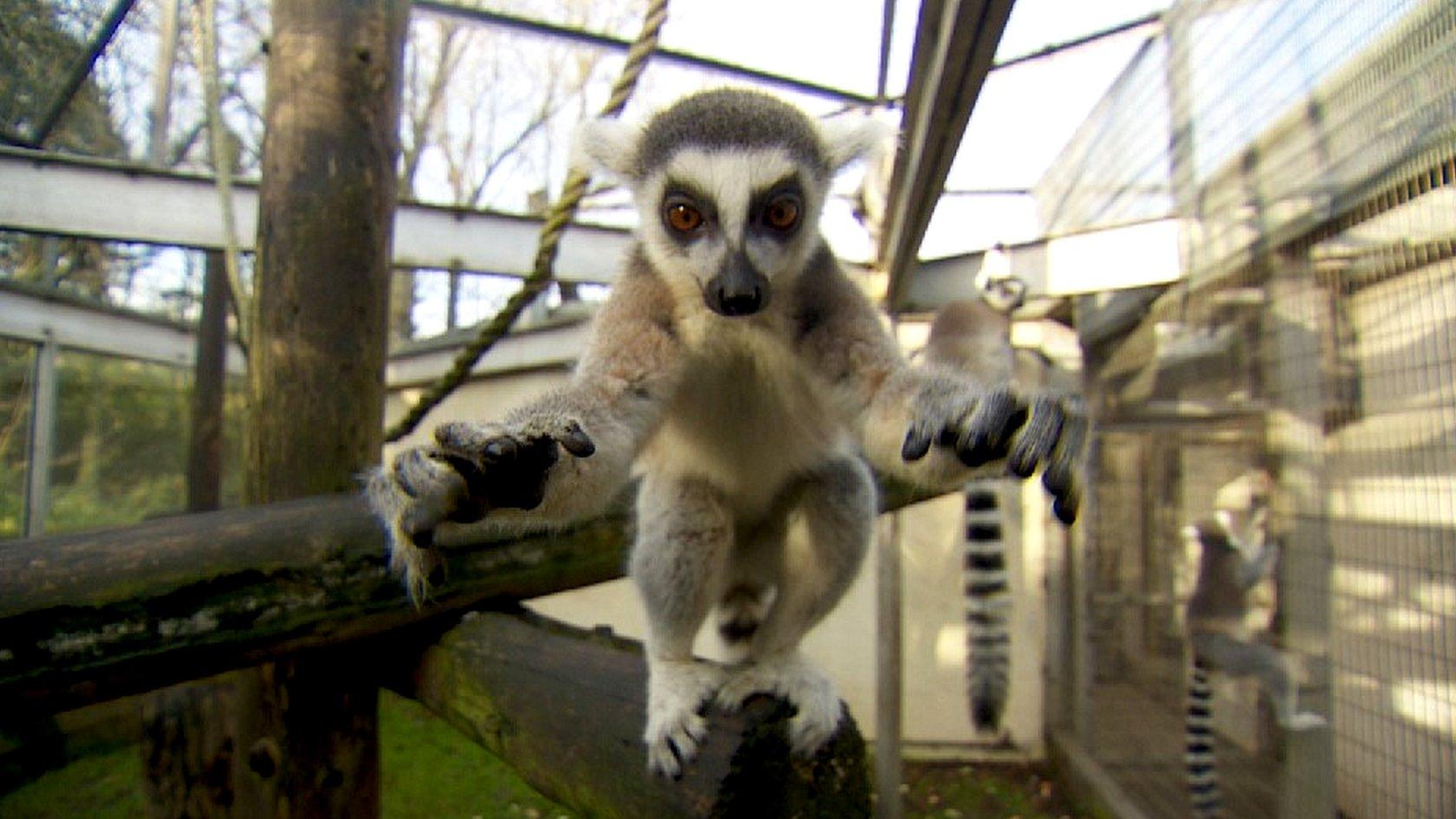Lemur extinction: Vast majority of species under threat
- Published
- comments

Experts say 105 of 111 lemur species and subspecies are now under threat
Almost every species of lemur, wide-eyed primates unique to Madagascar, is under threat of extinction.
That is the conclusion of an international group of conservationists, who carried out an assessment of the animals' status.
This "Primate Specialist Group" reviewed and compared the latest research into lemur populations and the threats to their habitat and survival.
Lemurs, they concluded, are the most endangered primates in the world.
What are the main threats to the species?
In a statement, Russ Mittermeier, from the charity Global Wildlife Conservation, external, who is chair of the Primate Specialist Group which delivered the alarming conclusions, said that it highlighted the "very high extinction risk to Madagascar's unique lemurs" and was "indicative of the grave threats to Madagascar biodiversity as a whole".
Victoria Gill explains the threat to primates, with the help of some lemurs
"Madagascar's unique and wonderful species are its greatest asset," he added.
The animals face a variety of threats, primarily the destruction of their tropical forest habitat, from so-called slash-and-burn agriculture, illegal logging, charcoal production and mining.
The hunting of lemurs for food, and their live capture for the pet trade has also emerged as a serious threat to their survival.
Prof Christoph Schwitzer from Bristol Zoological Society is deputy chair of the Primate Specialist Group. He told the BBC: "More and more, we are seeing unsustainable levels of lemur poaching.
"We see commercial hunting as well - probably for local restaurants. And this is a new phenomenon for Madagascar - we didn't see it at this scale 15 years ago."

The indri is the largest lemur species and is known locally as a babakoto, which means 'man of the forest'
There are 111 known species and subspecies of lemur, all endemic to Madagascar, and this group concluded that 105 of those were under threat.
This workshop, convened by the International Union for the Conservation of Nature (IUCN), is the first step in an official assessment of the conservation status of every studied species, which is ultimately published as what is known as the Red List of Threatened Species.
The findings though will go through a peer review process before the Red List is officially updated to reflect them.
What can be done to prevent the animals dying out?
Although the conclusions sound dire, that is the aim of this assessment process - to examine the latest research and use it to work out what the most urgent conservation priorities are.

The northern sportive lemur is Critically Endangered
The IUCN has also already implemented what it calls a "lemur action plan, external" to save the animals, with plans including protecting habitats where the most threatened species live and tackling poverty through ecotourism schemes, in order to help local people to avoid the need to hunt the animals.
Prof Schwitzer said that he was an "eternal optimist", adding that it was "important that people shout about this".
"People who love lemurs need to shout about these problems and get the message out there," he told BBC News.
"When we published the lemur action plan and the media picked up on it, suddenly we had people call offering to help - to donate money or other resources.
"That can really make a difference."
- Published18 January 2017
